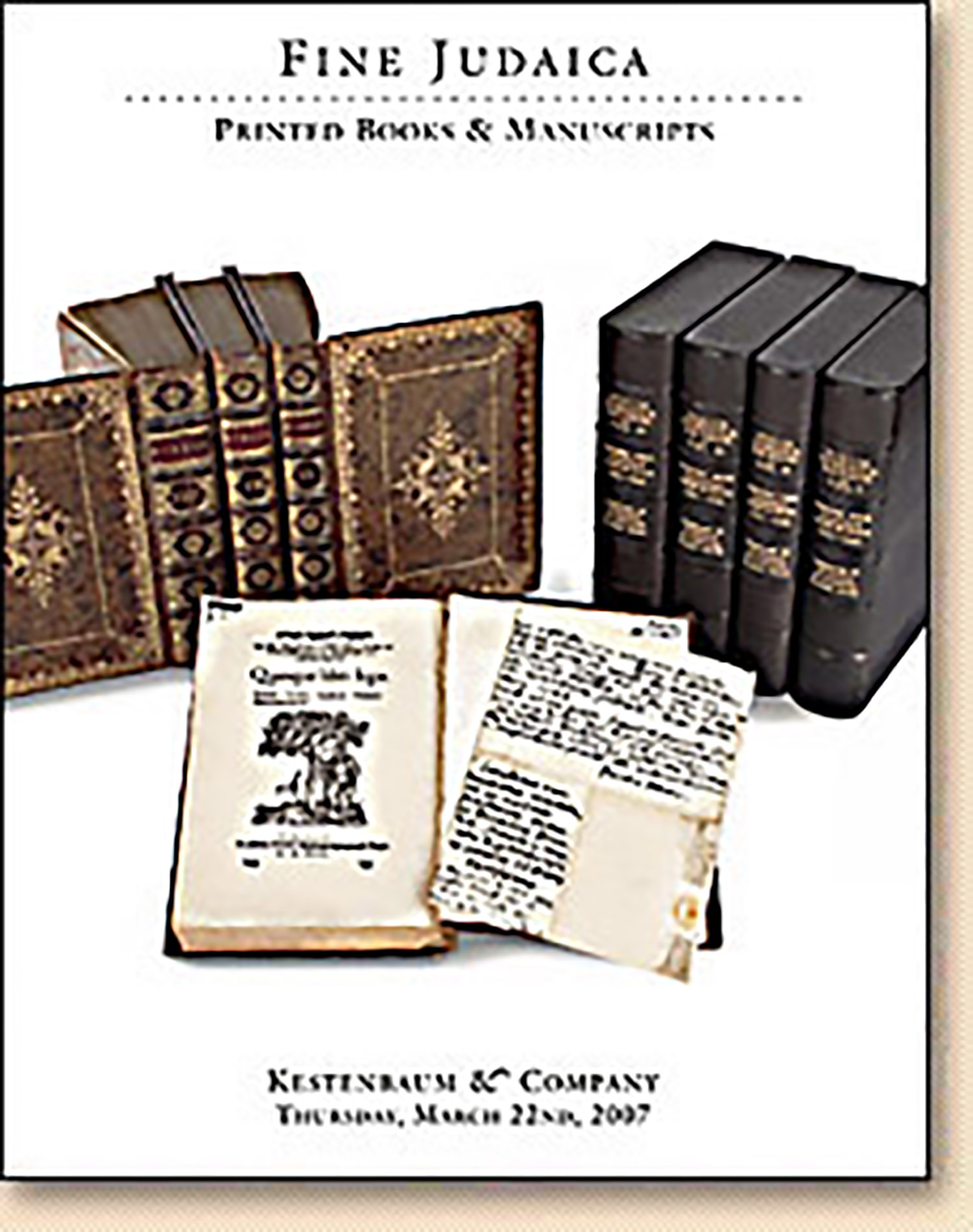Wolf Ehrenfried von Reizenstein. Der Vollkommene Pferde-Kenner [“The Complete Horse-Guide”]

AUCTION 36 |
Thursday, March 22nd,
2007 at 1:00
Fine Judaica: Printed Books & Manuscripts
Lot 83
(GERMANY)
Wolf Ehrenfried von Reizenstein. Der Vollkommene Pferde-Kenner [“The Complete Horse-Guide”]
Uffenheim: Joh. Simon Meyer 1764
Est: $7,000 - $9,000
PRICE REALIZED $11,000
What is so extraordinary about this veterinary work designed for equestrians, is the “Anhang” or Appendix, which consists of 36 pages of Hebrew vocabulary - indeed entire phrases - transliterated into Gothic letters and provided with German definitions.
The Appendix is subdivided in three. First, are presented the numbers in Hebrew, both in square Hebrew characters, and spelled out: Echod, Schnaim, Schloscho, etc. Next, in alphabetical order, is a comprehensive Hebrew-German dictionary. Some of the explanations are lengthy and instructive. For example, the entry “Kias kaf, die Hand-Treue, der Handschlag [Handshake]” is followed by this NB, “Wann ein Jud Kias kaf giebt, diim handel auf etwas einschlägt, so ist er verbunden nach seinen Gesetzen und Rechten es völlig und genau zu halten” [“When a Jew gives a handshake, he is bound by his Laws to hold to it”]. “Kias kaf” is as a garbled form of the Hebrew term “Tekias kaf,” which indeed, is binding in Jewish law. The dictionary is followed by five dialogues between Jewish horsetraders in their peculiar Hebraeo-German jargon. A typical conversation goes:
Wie jocker wollt ihr mirs nosenen?
Lo pochus als bead Kuf Rat.
Ihr send ein Godler Tippesch, es hat rechofene Talpaim in denen Achorim Raglaim und holchet wie ein Poro.
The German linear translation reads:
Wie theuer wollt ihr mirs geben?
Nicht weniger als um hundert Thaler.
Ihr send ein grosser Narr, es hat platte Hüfe in denen hintern Füssen und gehet wie eine Kuh.
Which can be translated as:
"How dear will you charge me?
Not less than one hundred Reichs-Thaler.
You are a big fool. It has flat hooves on the rear feet and walks like a cow!"
(From the Second Dialogue, “Zwentes Gespräch, vom Pferd-Handel”)
The only logical explanation for the inclusion of such an appendix in this sophisticate work, is that at this point in time, Jews played a vital role in the horse-trade and his German counterpart might have felt the need to be have an insight into the Jewish lingua franca as related to the business at hand.
A most unusual text
